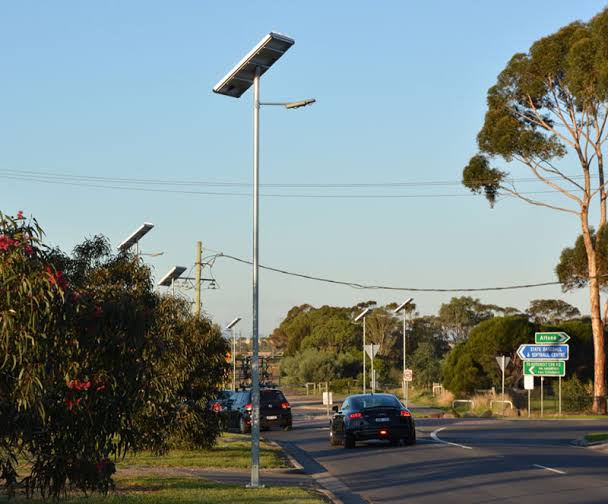Lighting up the streets with sustainable energy
Australia, known for its vast landscapes and abundant sunshine, has been harnessing the power of solar energy to illuminate its streets. Solar street lights have emerged as a promising solution, offering numerous benefits in terms of energy efficiency, cost savings, and environmental sustainability. This article explores the history, current usage, and future expectations of solar street lights in Australia, shedding light on their transformative potential for the nation.
A Bright History
The history of solar street lights in Australia can be traced back to the early 2000s when the country began exploring alternative energy sources. As concerns about climate change and rising energy costs grew, solar power gained momentum as a viable and renewable solution. The development and deployment of solar street lights gained traction as a practical application of solar energy in public spaces.
Current Usage: Enlightening Communities
Today, solar street lights have become a common sight in many Australian cities and towns. These innovative lighting systems offer numerous advantages over traditional street lights powered by the electrical grid. The most significant advantage lies in their autonomy and ability to operate independently from the grid, making them an ideal choice for remote areas or regions with unreliable power infrastructure.
Solar street lights are equipped with photovoltaic panels that convert sunlight into electricity during the day, storing it in batteries for use during the night. This self-sustaining mechanism ensures continuous lighting without the need for external power sources, reducing dependence on fossil fuels and minimizing greenhouse gas emissions. Furthermore, the absence of underground cables in solar street light installations simplifies the infrastructure requirements and reduces maintenance costs.
According to recent statistics, Australia has witnessed a steady increase in the adoption of solar street lights. In 2022, approximately 150,000 solar street lights were installed across the nation, contributing to significant energy savings and reducing carbon emissions by an estimated 300,000 metric tons annually. The implementation of solar street lights has not only improved lighting conditions but has also enhanced public safety, particularly in remote areas where reliable street lighting was previously unavailable.
Future Expectations: A Shining Path Ahead
The future of solar street lights in Australia appears exceptionally promising. With advancements in solar technology and declining costs of photovoltaic panels, solar street lights are expected to become even more widespread. Government initiatives and policies promoting renewable energy are likely to further accelerate their adoption and integration into the urban landscape.
One significant area of development is the incorporation of smart features into solar street lights. By integrating sensors, wireless communication systems, and intelligent controls, these lights can adjust their brightness based on ambient lighting conditions, detect motion for enhanced security, and even gather environmental data such as air quality and weather conditions. Such smart capabilities not only improve functionality but also enable efficient energy management, ensuring optimal performance and energy savings.
Moreover, the integration of solar street lights with emerging technologies like Internet of Things (IoT) and artificial intelligence (AI) presents exciting opportunities. These lights can be connected to a central monitoring system, allowing for remote monitoring, fault detection, and predictive maintenance. Additionally, AI algorithms can analyze data collected from the lights and optimize their performance, resulting in improved energy efficiency and cost-effectiveness.
Lighting the Way Forward
Solar street lights have come a long way in Australia, transforming the nation’s streets with clean, renewable energy. Their history, marked by the country’s commitment to sustainability, has paved the way for their current widespread usage. As Australia continues to prioritize renewable energy and environmental conservation, solar street lights are poised to play an even more significant role in the future.
The potential for solar street lights to become smarter, more efficient, and seamlessly integrated into the urban landscape holds great promise. The combination of solar power, IoT, and AI presents exciting possibilities for enhanced functionality and improved energy management. With ongoing advancements and decreasing costs, solar street lights are expected to become a standard feature in Australian cities and towns, bringing numerous benefits to communities and the environment.
The future expectations for solar street lights in Australia revolve around several key aspects. Firstly, there will likely be an increased focus on sustainability and reducing carbon emissions. Solar street lights offer an opportunity to transition away from traditional fossil fuel-powered lighting systems, contributing to the nation’s renewable energy goals. The integration of solar street lights into urban planning and infrastructure development will play a vital role in achieving these objectives.
Secondly, technological advancements will continue to drive the evolution of solar street lights. The efficiency of photovoltaic panels is expected to improve, enabling better energy conversion and storage capabilities. This will lead to enhanced performance and increased reliability, ensuring consistent lighting throughout the night. Additionally, the integration of advanced sensors, wireless connectivity, and intelligent controls will make solar street lights more responsive and adaptable to the surrounding environment.
Thirdly, the adoption of smart city initiatives will further accelerate the growth of solar street lights. As cities become more connected and data-driven, solar street lights can contribute to the creation of intelligent and sustainable urban environments. By leveraging the power of IoT and AI, these lights can communicate with other smart infrastructure, optimize energy usage, and provide valuable insights for urban planning and resource management.
The economic benefits of solar street lights cannot be overlooked. While the upfront costs of installation may be higher compared to traditional street lights, the long-term savings from reduced electricity bills and maintenance expenses are significant. Solar street lights require minimal maintenance due to their durable design and lack of reliance on external power sources. These cost savings can be reinvested in other community development projects, further enhancing the overall quality of life.
So, solar street lights have emerged as a beacon of sustainable and efficient lighting in Australia. Their history, current usage, and future expectations highlight their transformative potential in reshaping urban landscapes and promoting renewable energy. As the nation continues to prioritize sustainability and innovation, solar street lights are poised to play a crucial role in creating brighter, greener, and smarter communities.








